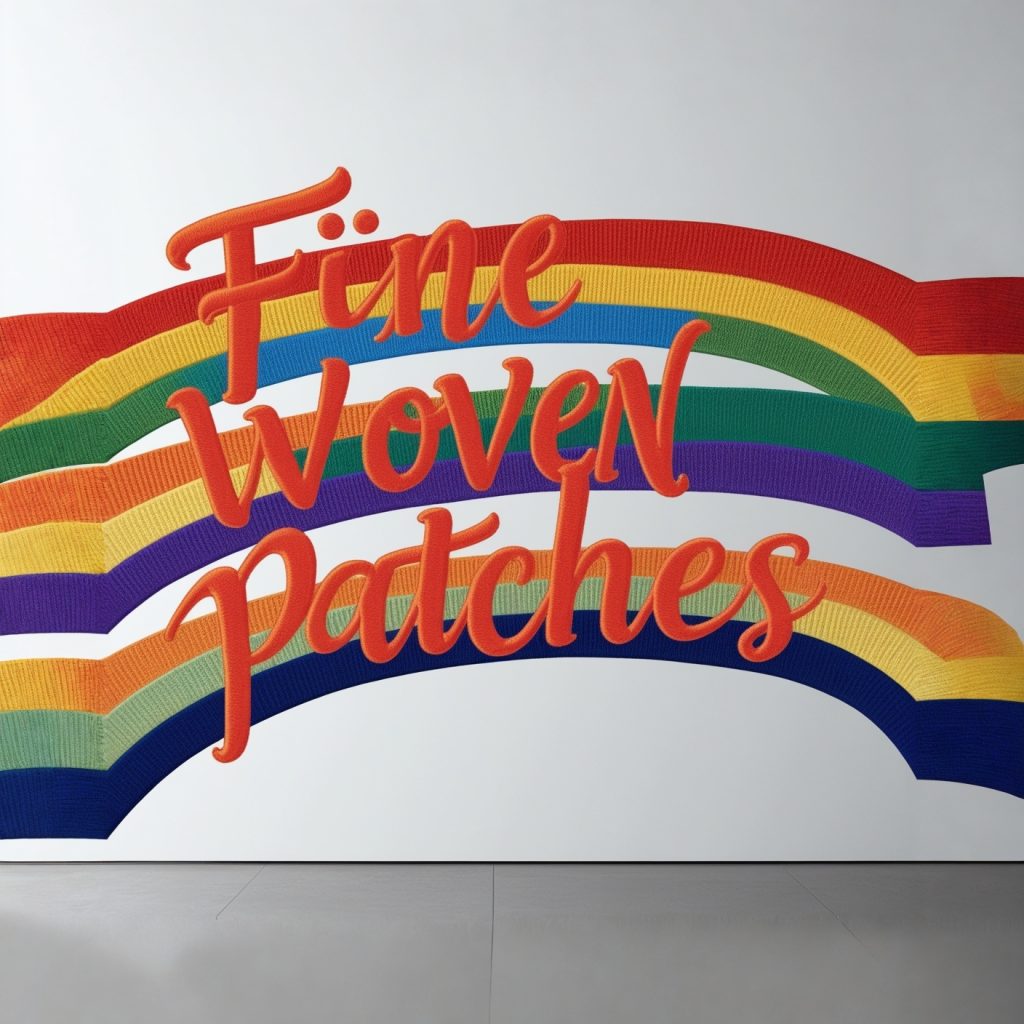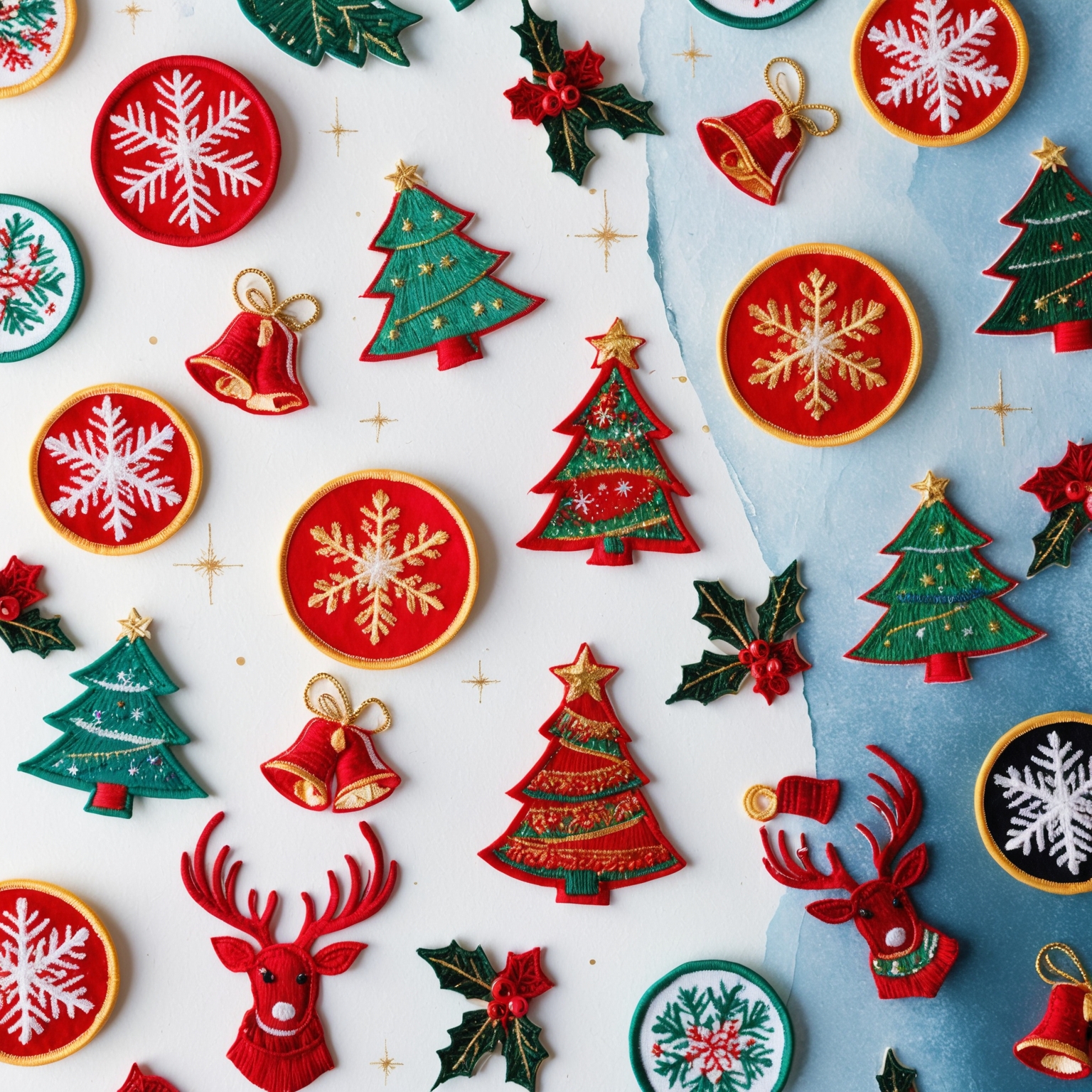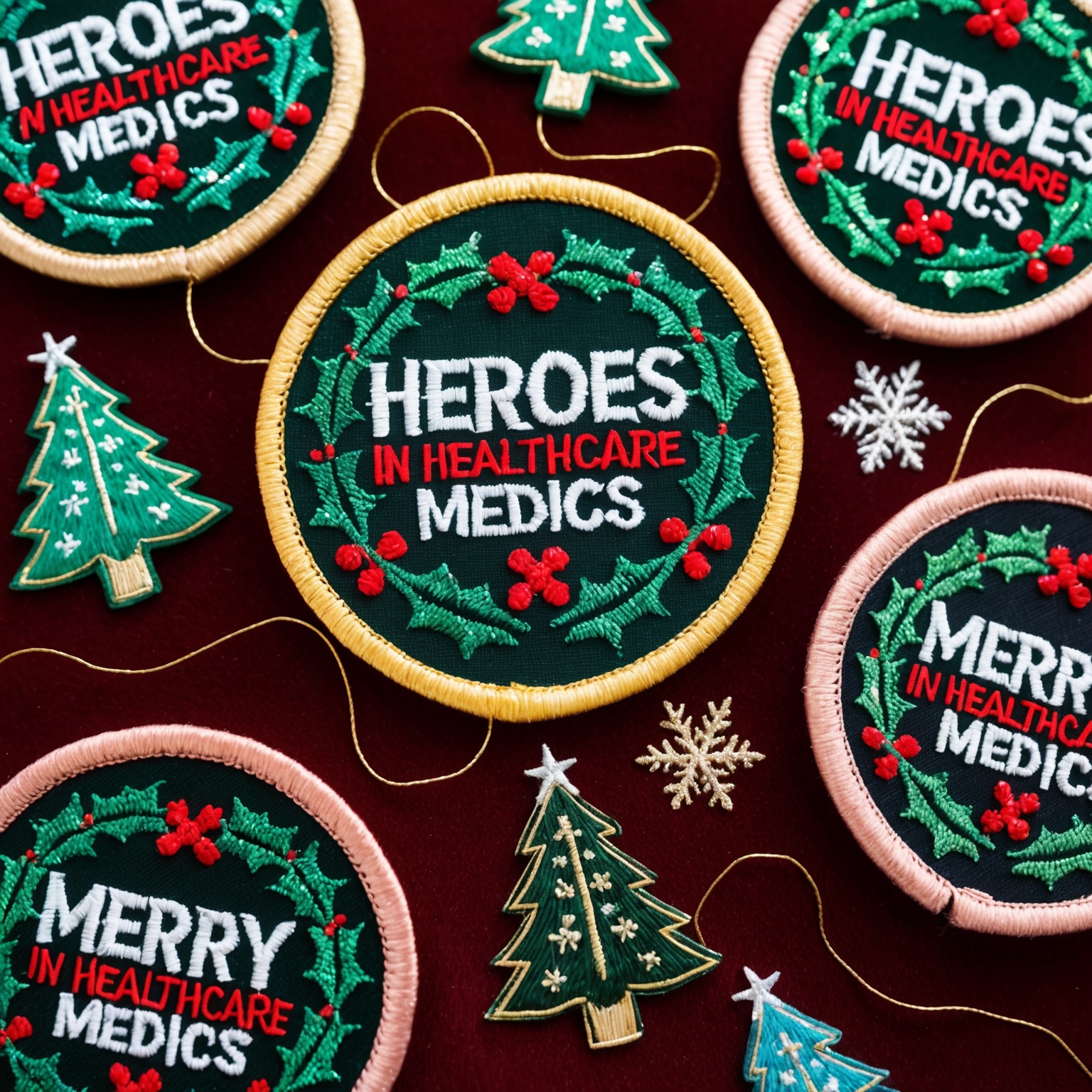Fine woven patches are a versatile and elegant option for displaying logos, emblems, and intricate designs on various garments and accessories. Known for their ability to capture high levels of detail with a smooth finish, these patches are favored by businesses, organizations, fashion brands, and clubs looking to create a sophisticated and durable product. Unlike embroidered patches, which use stitched threads, fine woven patches are made by weaving thin threads together, allowing for more precision and detail. This article delves into the 10 essential factors to consider when selecting the perfect fine woven patch, ensuring that both quality and design meet the highest standards.
1. Understanding Fine Woven Patches
Before delving into the selection process, it’s crucial to understand what fine woven patches are and how they differ from other types of patches. This knowledge helps in appreciating their unique qualities and applications.
- Definition and Characteristics: Fine woven patches are crafted by weaving threads into a tight, dense fabric. This method allows for the creation of intricate designs with a high degree of clarity. The result is a smooth, flat patch that can depict detailed logos, fine lines, and small text more accurately than embroidered patches. The woven method also allows for a more subtle, professional appearance, making them suitable for high-end applications.
- Comparison with Embroidered Patches: While embroidered patches use thicker threads stitched onto a fabric backing, creating a textured, raised surface, fine woven patches use finer threads woven together. This difference not only affects the visual and tactile qualities but also the level of detail that can be achieved. Fine woven patches are typically thinner and more flexible, making them ideal for applications where a sleek look and fine detail are desired.
2. Detail and Clarity of the Design
One of the main advantages of fine woven patches is their ability to accurately reproduce detailed designs. This factor is particularly important for designs with complex elements or small text.
- Complex Designs: The woven technique allows for precise replication of intricate patterns and subtle color gradients. This capability is ideal for logos with detailed elements, such as small symbols, gradients, or finely detailed lines. For instance, a corporate logo with intricate graphics can be captured accurately, ensuring brand integrity and professional appearance.
- Text Clarity: Fine woven patches excel in maintaining text clarity, especially when dealing with small fonts. The use of thin threads in the weaving process ensures that letters are clear and legible, making them suitable for patches that need to convey detailed information or specific messages.
3. Choice of Colors and Color Matching
Color plays a critical role in the effectiveness and aesthetic appeal of fine woven patches. The ability to match specific colors accurately is essential, particularly for brand consistency.
- Pantone Matching System (PMS): Many manufacturers of fine woven patches offer color matching using the Pantone Matching System, which ensures precise color reproduction. This system is particularly useful for corporate logos and branding, where exact color matching is crucial for maintaining brand identity.
- Color Options and Combinations: Fine woven patches can incorporate a wide range of colors, including subtle transitions and gradients that are difficult to achieve with other types of patches. The choice of colors can significantly impact the patch’s visual appeal and effectiveness in conveying the intended message.
4. Size and Shape of the Patch
The size and shape of a fine woven patch are important factors that influence its application, visibility, and design intricacy.
- Standard and Custom Shapes: While standard shapes like circles, squares, and rectangles are common, custom shapes can add uniqueness to the patch. Custom shapes can be tailored to follow the contours of a logo or a specific design element, enhancing the patch’s overall aesthetic.
- Size Considerations: The patch’s size should be chosen based on its intended use and the level of detail in the design. Larger patches allow for more detail and visibility, making them suitable for prominent display on jackets or bags. Smaller patches, on the other hand, are more subtle and versatile, ideal for placement on uniforms, hats, or sleeves.
5. Backing Options for Application
The choice of backing for a fine woven patch is crucial as it determines how the patch will be attached to the garment or accessory.
- Sew-On Backing: This traditional method involves stitching the patch onto the fabric. It offers a permanent and durable attachment, suitable for items that will undergo frequent washing or wear.
- Iron-On Backing: Iron-on backings feature a heat-activated adhesive that allows the patch to be attached using an iron. This method is convenient and provides a strong bond, though it may not be as permanent as sewing. It is ideal for casual applications or for those who prefer an easy application process.
- Velcro Backing: Velcro backings provide the flexibility of easy attachment and removal. This option is particularly useful for uniforms, tactical gear, or any situation where patches need to be interchangeable. It also allows for the patch to be removed for washing, preserving its longevity.
- Adhesive Backing: Adhesive backings offer a peel-and-stick application, making them ideal for temporary use or special events. While not as durable as other options, adhesive backings are useful for short-term applications or when sewing or ironing is not feasible.
6. Material Quality and Durability
The materials used in a fine woven patch significantly impact its durability and appearance. High-quality materials ensure that the patch maintains its look over time and withstands wear and tear.
- Thread Quality: The quality of the threads used in the weaving process is crucial. High-quality polyester threads are commonly used due to their strength, durability, and colorfast properties. These threads resist fading and maintain vibrant colors even after multiple washes.
- Backing Material: The backing material provides structure to the patch and can affect its durability. A sturdy backing helps the patch maintain its shape and prevents fraying. Different backing materials, such as felt, canvas, or plastic, can be chosen based on the desired flexibility and durability.
7. Finishing Touches and Border Styles
The finishing details of a fine woven patch, including the border style, contribute to its overall appearance and functionality.
- Merrowed Edge: A merrowed edge involves stitching around the perimeter of the patch, creating a raised border. This finish is durable and helps prevent fraying, making it a popular choice for traditional patch designs.
- Laser Cut Edge: Laser-cut edges provide a clean and precise finish, allowing for intricate shapes and detailed designs. This method is ideal for custom-shaped patches and designs with fine details that need to extend to the edge of the patch.
- Heat Cut Edge: Heat-cut edges use a hot knife to seal the edges of the patch, resulting in a smooth, fray-resistant finish. This technique is often used for patches with complex shapes or detailed edges, as it provides a crisp, clean look.
8. Customization and Personalization
Customization is a key aspect of creating a fine woven patch that stands out and meets specific needs.
- Custom Design Elements: Incorporate unique elements that reflect the brand, organization, or event. This can include specific imagery, motifs, or color schemes that align with the intended message and aesthetic.
- Personalized Text and Details: Adding personalized details, such as names, dates, or specific messages, can make a patch more meaningful. This is particularly effective for commemorating special events, recognizing individual achievements, or creating limited edition patches.
9. Consideration of the Intended Use
The intended use of the patch should guide the design and material choices, ensuring that it meets the practical requirements of its application.
- Uniforms and Professional Attire: For uniforms and professional attire, the patch should be durable and maintain a professional appearance. It should withstand frequent washing and wear, making high-quality materials and precise color matching essential.
- Promotional Products and Merchandise: For promotional products and merchandise, the design should be eye-catching and memorable. Consider the target audience’s preferences when choosing colors, imagery, and design elements to ensure the patch resonates with them.
- Special Events and Limited Editions: For special events or limited edition patches, consider incorporating unique features or special materials, such as metallic threads or glow-in-the-dark elements. These features can make the patch stand out and add a collectible value.
10. Choosing a Reputable Manufacturer
Selecting a reputable manufacturer is crucial to ensuring the quality and accuracy of your fine woven patch. The right manufacturer will provide guidance and expertise throughout the design and production process.
- Experience and Expertise: Choose a manufacturer with extensive experience in producing fine woven patches. They should have a proven track record and a portfolio of past work that demonstrates their ability to create high-quality patches.
- Collaboration and Communication: Effective collaboration and clear communication with the manufacturer are key to achieving the desired outcome. The manufacturer should be responsive, provide detailed proofs and samples, and offer advice on materials and design choices.
- Production and Quality Control: A reputable manufacturer will have strict quality control measures in place to ensure that each patch meets the specified standards. This includes checking for color accuracy, design clarity, and overall craftsmanship.
Case Studies: Successful Fine Woven Patch Projects
To illustrate the principles of selecting and designing fine woven patches, let’s explore a few successful projects that highlight the versatility and appeal of these patches.
- Corporate Branding for a Tech Company: A leading tech company used fine woven patches to create branded merchandise for a product launch. The patches featured the company’s logo, product name, and a sleek design with metallic threads. The use of fine woven patches allowed for detailed replication of the logo, resulting in a professional and polished look that was well-received by customers and employees.
- Uniform Patches for a Security Firm: A security firm opted for fine woven patches to create uniform insignia for their personnel. The patches included the company’s logo, security badges, and the employees’ names. The fine weaving technique ensured that the small text and detailed logo were clear and legible, while the durable materials used in the patches held up well under daily use.
- Event Patches for a Music Festival: A popular music festival commissioned fine woven patches as part of their merchandise offering. The patches featured a vibrant design with intricate patterns and a variety of colors, capturing the festival’s lively atmosphere. The use of high-quality threads ensured that the patches were bright and eye-catching, making them a popular item among attendees.
- Commemorative Patches for a Historical Society: A historical society created fine woven patches to commemorate a significant anniversary. The patches featured a detailed depiction of a historical landmark, along with the society’s name and the anniversary date. The fine woven technique allowed for a high level of detail, making the patches a cherished keepsake for members and supporters.
The Future of Fine Woven Patches
As technology and design trends continue to evolve, fine woven patches are likely to see new innovations and applications. Several trends may shape the future of these versatile patches:
- Digital Integration: The integration of digital technologies, such as QR codes or augmented reality (AR), could add interactive elements to fine woven patches. These features could link to digital content, such as promotional videos, digital brochures, or additional product information, providing a richer experience for users.
- Sustainable and Eco-Friendly Materials: With a growing emphasis on sustainability, there is likely to be increased demand for eco-friendly materials in patch production. This could include the use of recycled threads, organic fabrics, and environmentally friendly dyes, catering to consumers who prioritize sustainability.
- Enhanced Customization Options: Advances in manufacturing technology may allow for even more detailed customization options, including the ability to create highly detailed, photo-realistic designs. This will expand the creative possibilities for fine woven patches, allowing for even more unique and personalized designs.
- Globalization and Cultural Influences: As brands and organizations continue to operate on a global scale, fine woven patches may increasingly reflect diverse cultural influences. This could include incorporating cultural symbols, patterns, and colors that resonate with a global audience, enhancing the cultural relevance and appeal of the patches.
Conclusion
Fine woven patches offer a sophisticated and versatile way to showcase intricate designs and logos. Whether used for corporate branding, uniforms, promotional items, or special events, these patches provide a high level of detail and a polished finish that can enhance any garment or accessory.
By considering the 10 key factors outlined in this article—understanding the nature of fine woven patches, ensuring design clarity, selecting appropriate colors, determining size and shape, choosing the right backing, prioritizing material quality, considering finishing touches, customizing the design, understanding the intended use, and selecting a reputable manufacturer—you can create the perfect fine woven patch that meets your needs and exceeds expectations. As the industry evolves, staying informed about new trends and technologies will help you continue to create innovative and impactful patches.
If you are interested in purchasing high-quality custom patches, feel free to call us at 1-866-903-4903 or fill out one of our FREE quotes here.




